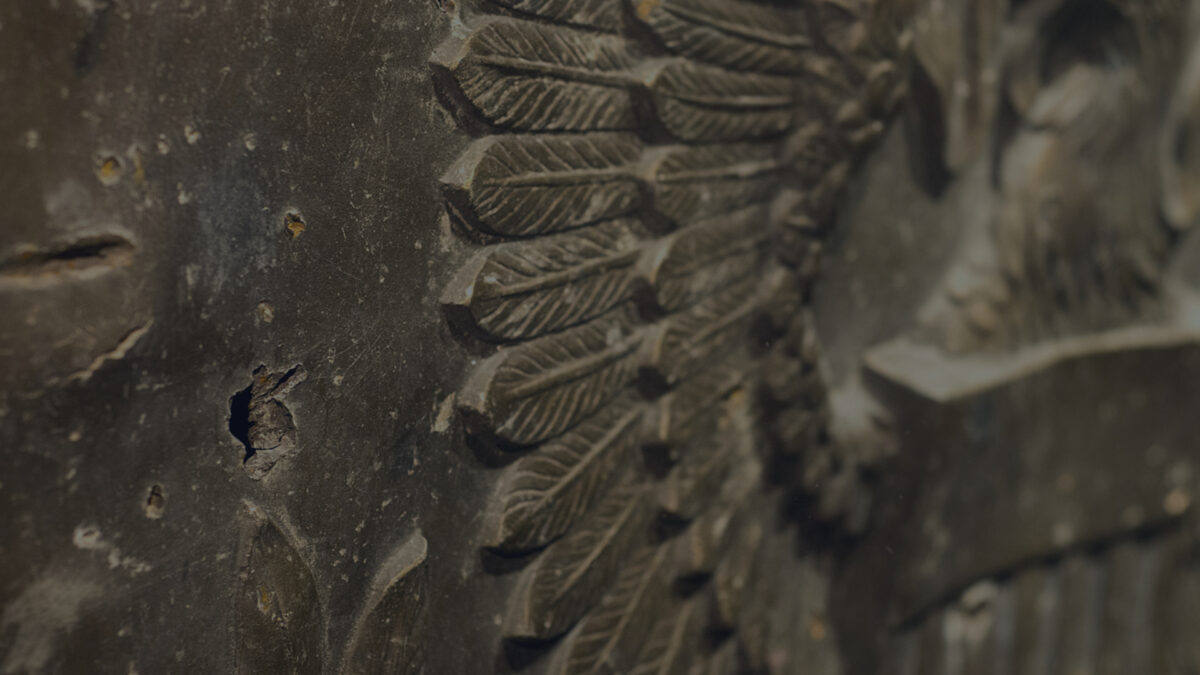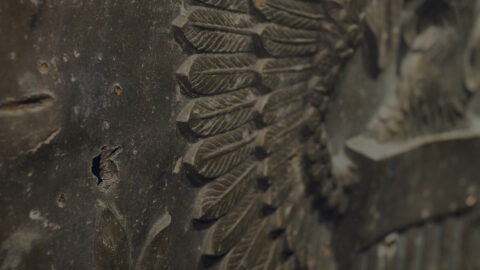Our Most Frequently Asked Questions
The Gates of Times forever frame the moment of destruction at 9:02 AM. The 9:01 Gate is a symbolic reference that represents the last moment of innocence for our nation. The 9:03 Gate represents the first moment into the aftermath and hope for the future.
The Alfred P. Murrah Federal Building was located just south of the Reflecting Pool, where the Field of Empty Chairs now stands. The Reflecting Pool itself was once 5th Street – where the truck holding the bomb was parked and detonated. The building continued back to the concrete walls and stretched from the remaining walls in the east corner to the western edge of the Memorial. It was approximately 75 feet wide, 318 feet long and nine stories tall.
The east and south walls along the footprint contain areas of original Federal Building material. The east wall is the only remaining wall that is still intact from the building. The south perimeter wall contains portions of the original wall, but is mostly reinforced concrete for the plaza above.
The chairs have been arranged in nine rows, which represent the nine floors of the Federal Building. Each individual’s chair was then placed on the row (or the floor) on which the person worked or was visiting when the bomb exploded. The chairs were then grouped by agency and in alphabetical order within that agency, whether the person was employed in that agency or visiting. The five chairs located in the westernmost column represent the five people killed who were not in the Federal Building at the time of the bombing. Two were in the Oklahoma Water Resources Building, one person was in the Athenian Building, one person was outside the building near the blast and the fifth chair represents the nurse who lost her life in the rescue efforts. Both the Water Resources Board Building and the Athenian Building were so heavily damaged they had to be torn down. There were also three unborn children killed, not identified in the Medical Examiner’s count of 168, but they are listed on their mothers’ chairs below their mothers’ names.
The chairs have also been arranged to abstractly reflect the outline of the blast cavity of the Federal Building with the heaviest concentration reflecting the heaviest damage to the building.
The chair lights are on a photocell timer. They generally turn on at dusk and off at dawn.
The bomb damaged over 300 buildings in Oklahoma City. Thirty buildings were heavily damaged and 16 have since been torn down. Twenty blocks of downtown OKC had to be cordoned off due to the bomb’s radius of impact. The building behind the Survivor Tree was the Journal Record Building – constructed in 1923 and the former home of The Journal Record, a daily Oklahoma City business newspaper.
The building was fully occupied at the time of the bombing and received extensive damage. The roof was blown off, several floors collapsed, and glass permeated the entire structure. Fortunately, there were no fatalities, although there were several critical injuries. The south facade of the building shows visitors the impact and raw power of the blast. The windows are blackened with bricks or tint to replicate missing, bombed out windows and the jagged brick edge at the top of the building shows where the roof broke away and slid to the ground below.
The Journal Record Building has been restored to house the Oklahoma City National Memorial Museum, a world-class museum that tells the story of what happened here on April 19, 1995 – and its aftermath.
Originally, the chain-link fence was a protective barrier to keep people out of the destruction site. However, people soon began leaving mementos and symbols of hope on the fence. On October 25, 1998, as Memorial construction was about to commence, a group of family members, survivors and rescue workers moved 210 feet of the chain-link fence to its current location along Harvey Avenue. This location was chosen by the designers and allows people to continue to leave their tokens of love and resilience on the healing side of the Memorial – at the 9:03 Gate.
The new federal building is just northwest of the Children’s Area, between NW 6th and 8th Streets and Harvey and Hudson Avenues.
The answer is neither. It is a recognized national memorial, but the Oklahoma City National Memorial & Museum is owned and operated by the non-profit Oklahoma City National Memorial Foundation. It is an affiliate, or partner, of the National Park Service, which provides interpretive rangers on the Outdoor Symbolic Memorial. The Oklahoma City National Memorial & Museum does not receive any annual operating funds from the federal, state or local government. Museum admissions, store sales, the OKC Memorial Marathon, earnings from an endowment and private fundraising allow the Memorial and Museum to be self-sustaining.
Anyone may access the chairs at any time. Until the spring of 2004, the Field of Empty Chairs was closed to public access without staff escort to protect the grass. Now that the grass has become more resilient to foot traffic, the area is open to the public 24 hours a day. The chains are still used and rotated to control access and egress in order to alleviate the wear on the grass in various areas.
The Oklahoma City National Memorial & Museum DOES NOT allow any firearms within our property unless the person(s) is a credential carrying law enforcement officer.
Bags are not allowed inside the Memorial Museum. Purses smaller than 14″ by 14″ are allowed.



